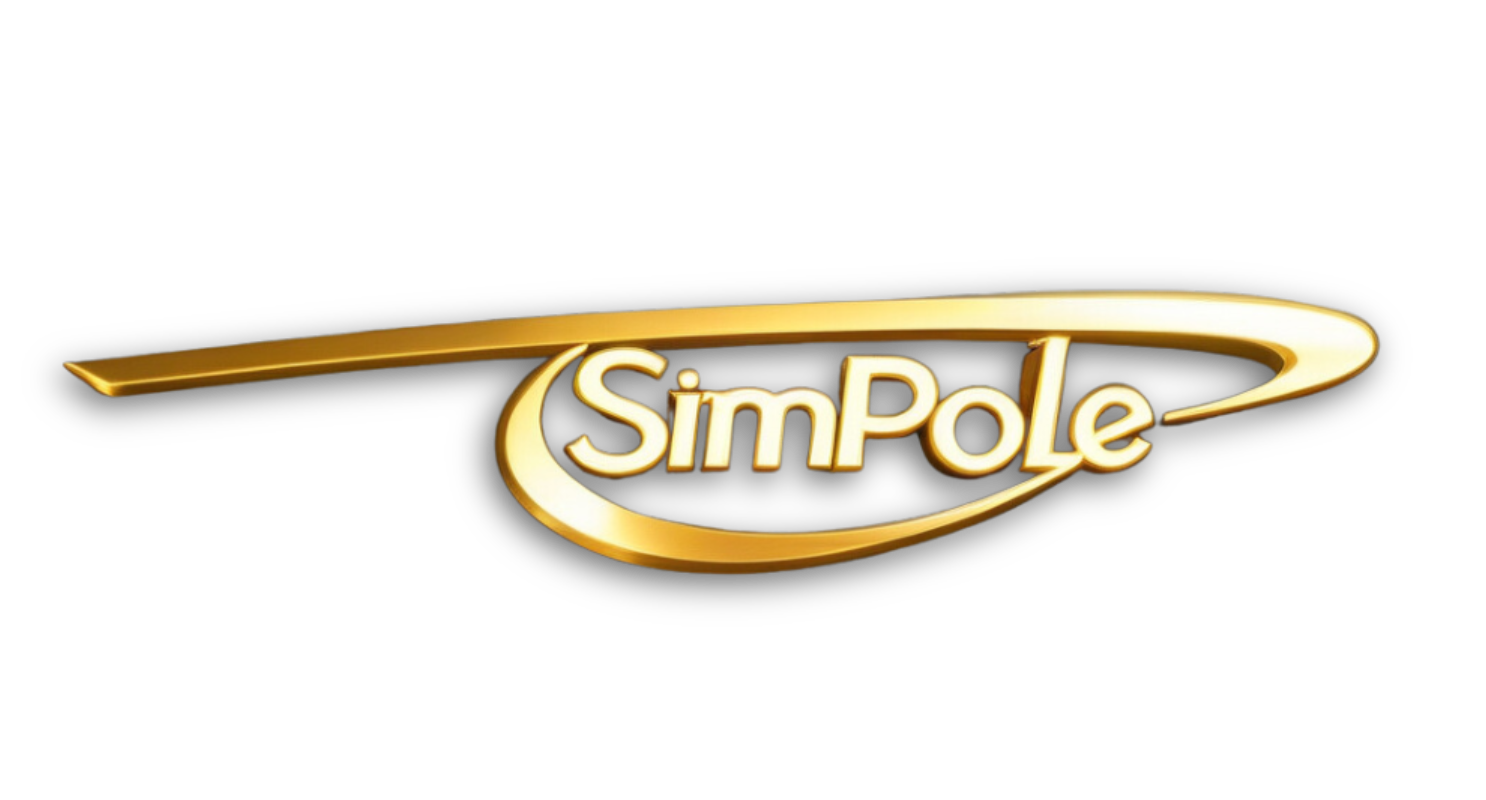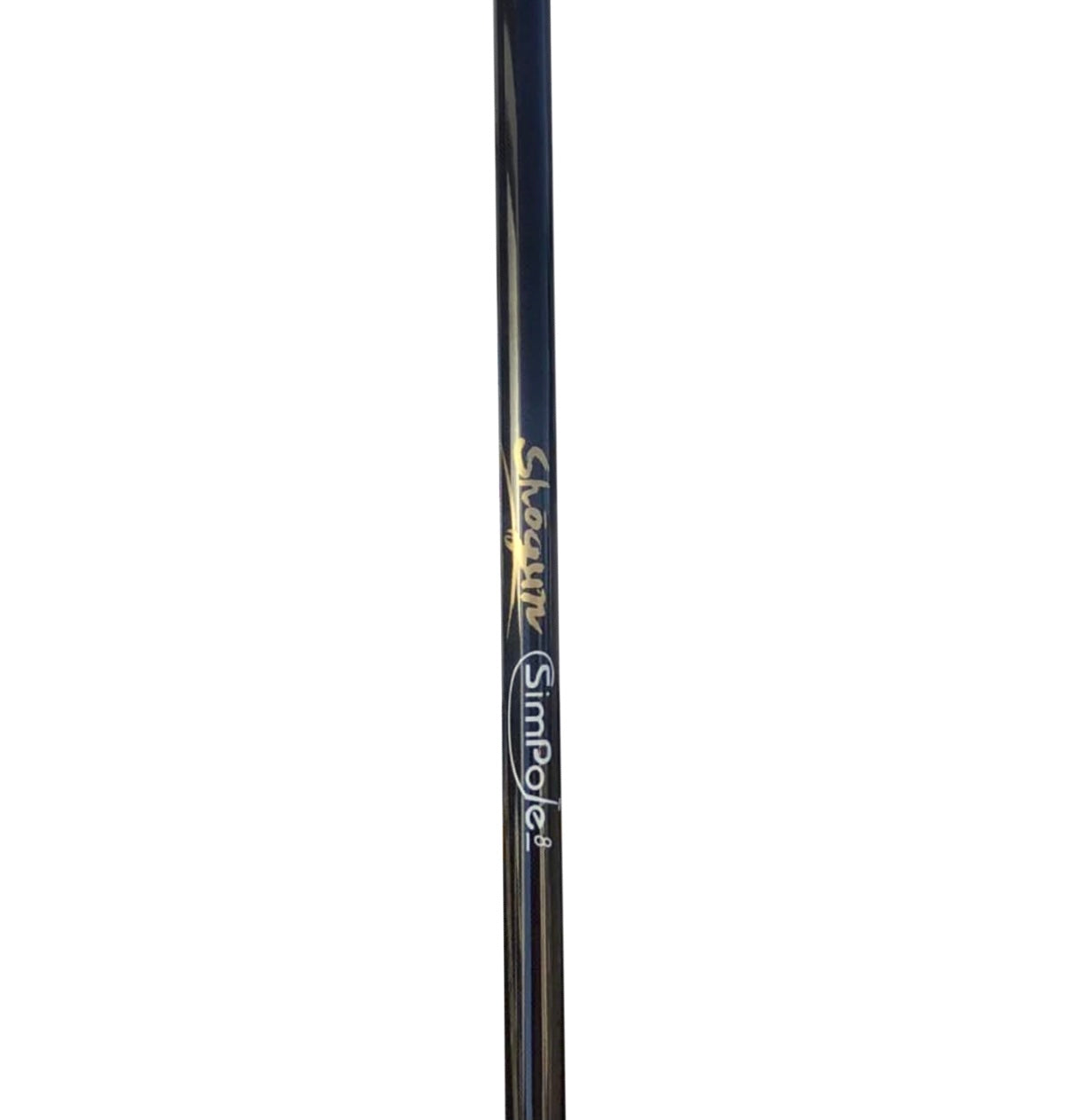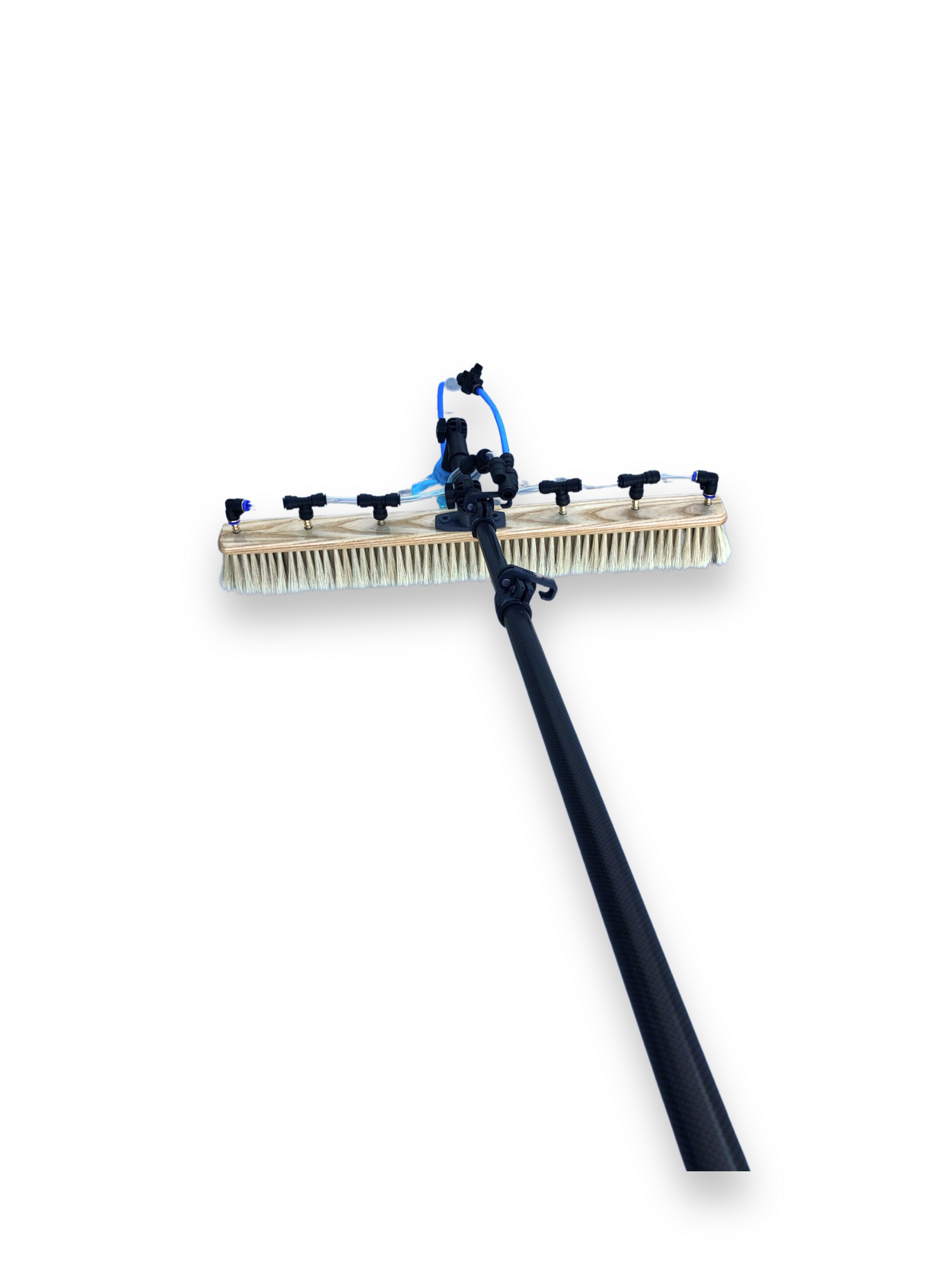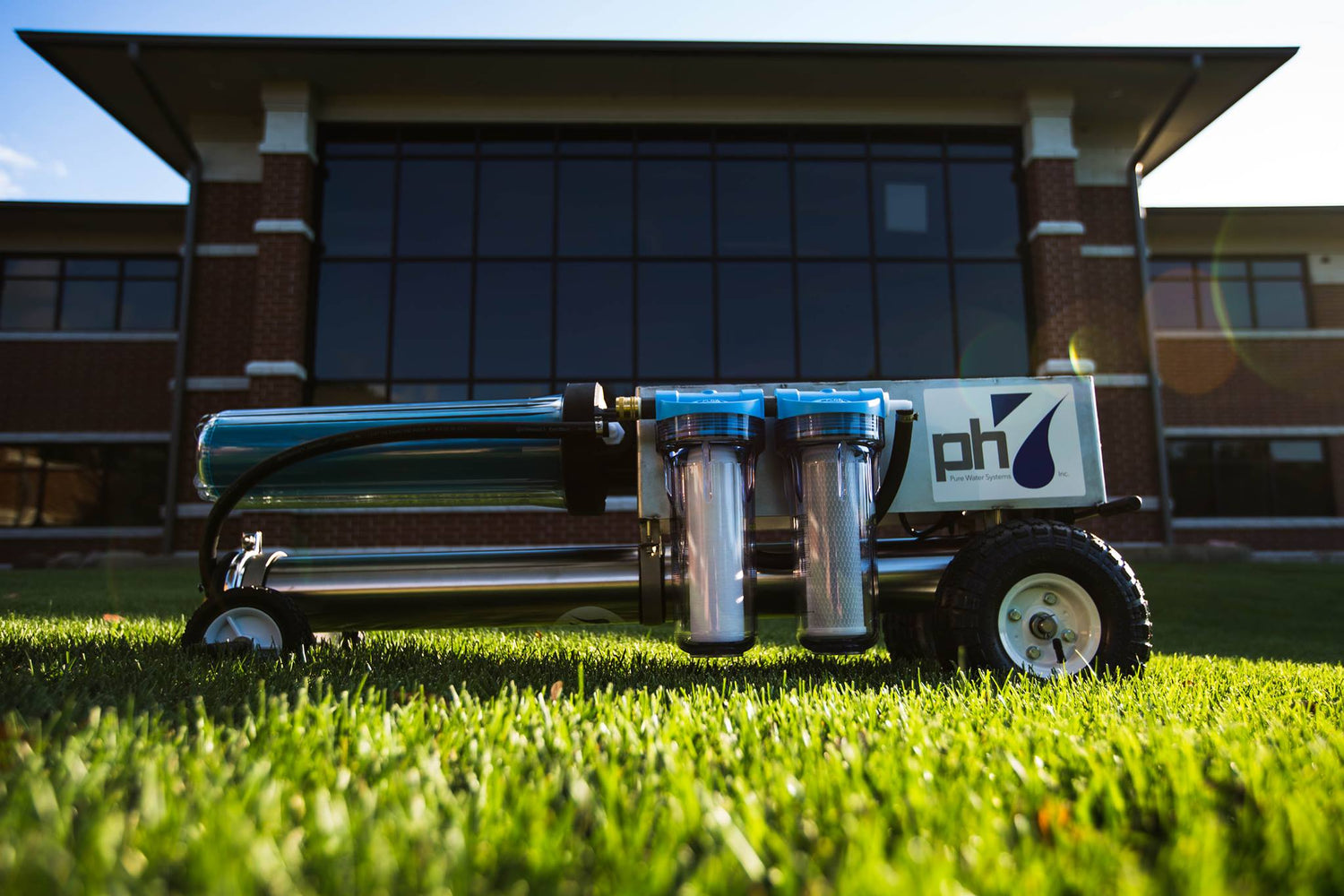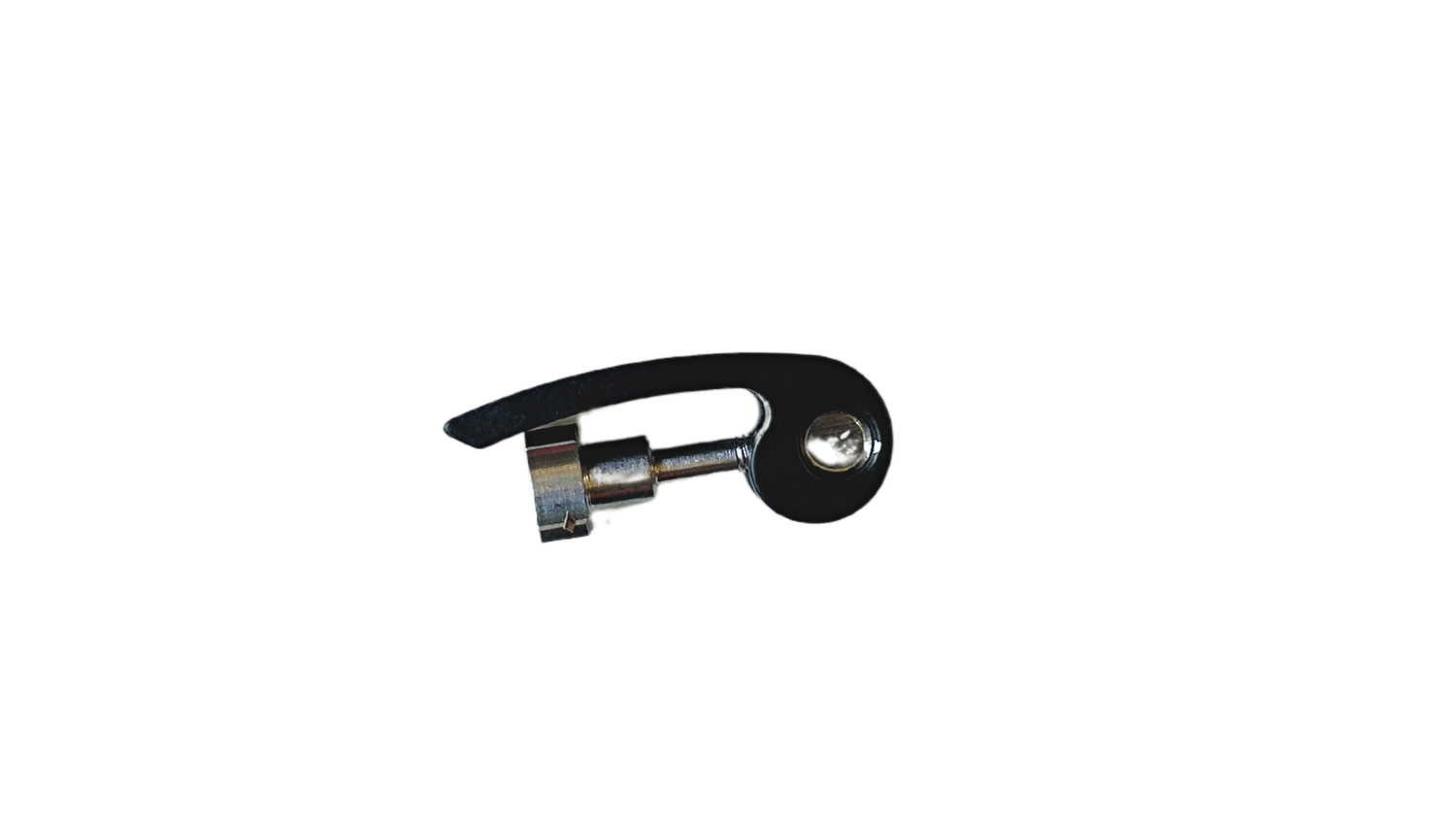SimPole Training Manual
No se pudo cargar la disponibilidad de retiro
Description
imPole Telescopic Water-Fed Pole Training Manual
- High strength-to-weight ratio
- Excellent corrosion resistance
- Thermal insulation capabilities
- Electrical insulation properties
- Durability and longevity
- Resistance to heat and chemicals
- Dimensional stability
Legal Disclaimer
Users of SimPole products are responsible for staying current on all safety regulations for their state, region, and local jurisdiction. SimPole and its affiliates make no claims regarding the legal compliance of this manual for all locations and regulatory changes, and users must ensure they follow the latest governmental guidelines, including but not limited to OSHA, ANSI, Call OSHA, or other overarching safety standards. SimPole or its affiliates shall not be held liable for any injury, property damage, or legal consequences resulting from the misuse of the product, failure to follow safety protocols, or operation in a manner deemed unsafe or dangerous by regulatory authorities. Users assume all responsibility when using SimPole products outside of their intended applications or failing to adhere to required safety measures. Always consult a qualified safety professional if you are unsure of any operational risks.
–––––
The SimPole water-fed pole system is designed to provide safe and efficient cleaning solutions for high and hard-to-reach surfaces, allowing operators to clean windows, solar panels, and other elevated surfaces from the ground, reducing the need for ladders and scaffolding. While this reduces many fall hazards, proper technique, risk awareness, and adherence to safety regulations are critical to preventing workplace injuries and property damage. This training manual provides a comprehensive guide to the safe operation of SimPole systems, focusing on safety regulations along with industry best practices.
Safety First: Electrical Hazards and Risk Awareness
Working with an extension pole presents a variety of electrical hazards that must be carefully managed. While SimPole’s non-conductive materials provide additional safety, they do not eliminate the risk of electrocution. Water itself can act as a conductor, and even a water-fed pole with insulated materials can become hazardous near live electrical sources. All electrical systems must be treated as live unless verified otherwise. Even if power is shut off at a breaker, solar panels and other power sources can still generate electricity. The minimum safe working distance from overhead power lines is 10 feet for lines carrying up to 50 kV, with greater distances required for higher voltage lines. As an added safety measure, SimPole recommends keeping the pole at least 20 feet from overhead power lines (with greater distance as required by safety regulations). Before beginning work, always scan the site for overhead power lines, service masts, and external electrical fixtures. Never allow water or the pole to come into contact with power sources, and always assume power lines are energized. If the pole or water spray contacts an electrical source, release the pole immediately and evacuate the area until a qualified electrician confirms it is safe to proceed.
Cleaning Solar Panels with SimPole
Solar panels remain energized even when disconnected from the main power source. This means that all wiring and panel surfaces should be treated as live at all times. Workers must assume electrical components are energized unless they have been properly tested and verified as de-energized. The risk of electrocution increases when using water near electrical components, making it critical to follow strict safety protocols.
Cleaning professionals should never allow water to enter junction boxes, panel wiring connections, or inverter units. No one should work in proximity to electrical circuits unless they are de-energized or protected. Before cleaning, always inspect for damaged wiring, cracks, or exposed electrical components, and if any irregularities are found, do not proceed with cleaning until a qualified electrician has addressed the issue.
To further minimize electrical risks, SimPole's non-conductive material can reduce but not eliminate the possibility of electrocution. Workers should use insulated gloves and boots designed for work around electrical sources for additional protection and be mindful of environmental factors such as rain or high humidity, which can increase conductivity risks.
Risk of Lightning Strikes When Using Extension Poles
Using an extended pole during a thunderstorm significantly increases the risk of a lightning strike. Outdoor work must be suspended when electrical storms are approaching. Lightning seeks the tallest object in an area, and an extended pole—especially one that is wet or made from carbon fiber—dramatically increases the likelihood of a strike. If thunder is heard within 30 seconds of a lightning flash, work must stop immediately. The pole should be lowered and stored in a safe, horizontal position. Workers should seek shelter in an enclosed structure or vehicle and wait at least 30 minutes after the last thunderclap before resuming work. Do not take shelter under trees, poles, or other tall objects, as these are common lightning strike targets.
Fall Arc Hazard Awareness
- A falling pole has a large and unpredictable fall arc that can come into contact with electrical lines, or cause serious damage to vehicles, buildings, and pedestrians. The longer the pole, the greater the risk of an impact force. To mitigate these hazards, workers should always establish Rubber work gloves: Rubber gloves are best suited for working on live electrical equipment as they provide insulation against electric shock. You must choose the right grade of rubber to resist the voltage levels of the equipment.
a safe working perimeter in open space to account for uncontrolled falls. When working near buildings, be aware of overhangs, decorative structures, or fragile surfaces that could be damaged if the pole falls. Similarly, when working in parking areas, avoid positioning yourself in a way that a falling pole could impact vehicles. Wind conditions can significantly impact stability—gusts above 20 mph can cause the pole to shift or fall, making it difficult to control. If wind speeds increase suddenly, lower the pole and reassess safety conditions before continuing work.
Fall Protection & Rooftop Safety
When working on rooftops, fall hazards become a primary safety concern. Fall protection must be incorporated with any rooftop work or at heights as required by OSHA and/or other safety regulatory agencies. Workers must use a full-body harness system attached to a properly rated anchor point if working within 6 feet of an unprotected roof edge or while working on roofs considered to be a hazardous pitch. Before stepping onto a roof, always conduct a job hazard assessment to identify weak roof areas, skylights, and slip hazards. When accessing rooftops via ladders, always follow ladder safety guidelines, ensuring the ladder extends at least 3 feet above the landing surface, is placed at a 4:1 angle (1 foot out for every 4 feet of height), is secured to the landing surface, and is set on a level and stable surface. Workers must maintain three points of contact while ascending and descending a ladder.
Effective Cleaning Techniques
For windows and smooth building surfaces, a soft-bristle water-fed brush should be used to avoid scratching glass. Low-pressure purified water should be used to encapsulate soil that is agitated off the glass. Use the purified water to rinse the entire window from the top down to ensure a spot free finish. When cleaning solar panels, dust, pollen, and other contaminants can reduce efficiency by 15-25%. The recommended solar panel cleaning process begins with an inspection to identify cracks, damage, or loose wiring. If damage is present, the panel should not be cleaned. Use a soft-bristle brush and apply purified water with low pressure (under 100 psi) to avoid damaging seals or coatings. Work from the highest panel downward to prevent re-contaminating cleaned areas.
Maintenance & Troubleshooting
Proper maintenance ensures the longevity of the SimPole system and safe operation. Daily maintenance includes wiping down pole sections to remove dirt and debris, inspecting brush heads for wear, and checking hoses and fittings for leaks. If water pressure is low, verify that hoses are not kinked and filters are not clogged. If the pole sections are slipping, ensure clamps are properly tightened. If streaks or spots appear on glass or solar panels, check the water purity—TDS levels should ideally be at 0 PPM to prevent spotting, but TDS up to 10 PPM is often an acceptable level for window cleaning.
Professional Standards & Final Safety Checklist
Before beginning any job, a pre-work safety check should be conducted. Scan the worksite for overhead power lines and potential electrical hazards. Confirm that fall protection gear is in place before rooftop work. Assess weather conditions and stop work if lightning is present. Identify potential fall arc risks and clear the area of pedestrians and vehicles. Verify that all hoses, fittings, and equipment are functioning properly. By following these safety procedures, SimPole operators can minimize risks and maximize efficiency. Be sure to comply with all current safety regulatory agencies that apply to your area when working with SimPole products.
Conclusion: Mastering SimPole Safety & Performance
Understanding and implementing best safety practices is essential for both personal protection and professional efficiency. By maintaining awareness of electrical hazards, fall risks, lightning dangers, and best cleaning techniques, SimPole users can confidently provide high-quality, safe, and effective cleaning services. Always prioritize safety, training, and regular equipment inspections to ensure a long, injury-free career in water-fed pole cleaning.
SimPole TM (®)
Safety Measures
Personal Protective Equipment (PPE)
Wearing the appropriate PPE is crucial for ensuring safety during solar panel cleaning, particularly for protection against possible electric shocks. Essential PPE includes:
- Gloves: Insulated gloves are necessary to protect against electrical hazards. They also offer protection from chemical splashes that might occur during the cleaning process.
- Safety Goggles: These are vital for shielding the eyes from debris and cleaning agents, ensuring that no harmful substances come into contact with the eyes.
- Non-slip Shoes: These shoes prevent slips and falls on wet surfaces, reducing the risk of accidents and injuries.
Case Study Example: In a documented case study by SolarTech Cleaning Co., a technician successfully avoided a potential electric shock by wearing insulated gloves while disconnecting the solar panel system before starting the cleaning process. This incident underscores the importance of proper PPE in preventing serious injuries.
Product Recommendation: For a range of high-quality PPE suitable for solar panel cleaning, check out SPCF Online. They offer products designed to enhance safety and efficiency for professional solar panel cleaners.
Ladder Safety
Proper use of ladders can prevent falls. Key points include:
- Stable Ladders: Ensure ladders are sturdy and stable.
- Ladder Stabilizers: Provides extra stability on uneven surfaces.
- Securing Ladders: Use clamps and tie-offs to secure ladders in place.
Real Experience: Chris Virgin, in his training manual, emphasizes the use of ladder stabilizers and clamps to secure ladders on residential rooftops. www.alexanderswindowcleaning has used both a top ladder stabilizer and bottom one.
Product Recommendation: Warner offers robust ladder stabilizers and safety equipment for secure access to rooftops.
https://calfiregear.com/product/stop-a-ladder/
Personal Protective Equipment (PPE) for Fall Protection
When working at heights, using fall protection gear is crucial to ensure the safety of solar panel cleaners. Essential fall protection equipment includes:
- Safety Harnesses: These should be securely attached to anchor points to prevent falls. A properly fitted harness distributes the force of a fall across the body, minimizing injury.
- Anchor Points: These must be properly installed and capable of supporting the weight of a person to ensure that the fall protection system is effective.
Case Study Example: In a documented case study by Green Solar Cleaning, a technician successfully avoided a fall from a 20-foot roof by using a safety harness and anchor system during a routine cleaning. This incident highlights the importance of proper fall protection gear in preventing serious injuries and fatalities.
Product Recommendation: For reliable harnesses and anchor systems, browse the fall protection gear available at SPCF Online. They offer a range of high-quality products designed to enhance safety for professional solar panel cleaners working at heights.
Proper Safety Harnesses for Electric Shock Protection
- Insulating Materials: Safety harnesses made with non-conductive materials can help protect against electric shock. These materials prevent electrical currents from passing through the harness to the worker.
- Dielectric Hardware: Ensure that the harness has dielectric D-rings and buckles. Dielectric hardware is made of non-conductive materials like plastic or composite, which reduce the risk of electrical conduction.
- Full-Body Design: A full-body harness provides better support and safety compared to a simple belt. It distributes the force of a fall across the shoulders, thighs, and pelvis, reducing the risk of injury.
- Integrated Shock Absorbers: Harnesses with built-in shock absorbers can reduce the impact force in case of a fall, adding an extra layer of safety.
- Compliance with Safety Standards: Ensure the harness complies with relevant safety standards, such as ANSI (American National Standards Institute) and OSHA (Occupational Safety and Health Administration) guidelines. These standards ensure the harness is tested and approved for safety.
Recommended Products:
- Klein Tools Full-Body Harness: Known for its dielectric hardware and non-conductive materials, this harness is designed specifically for electrical safety.
- Guardian Fall Protection Cyclone Harness: This harness features dielectric hardware and an ergonomic design for comfort and safety.
- Miller H500 Harness: Offers dielectric D-rings and is made with insulating materials to protect against electrical hazards.
Product Recommendation: For a range of safety harnesses suitable for protection against electric shock, check out SPCF Online. They offer high-quality, compliant fall protection gear tailored for professional solar panel cleaners.
Please read the enclosed document thoroughly so we can start your warranty.
In an effort to focus on the importance of safety and making sure all our customers are aware of the dangers and risks of the job, please acknowledge that you will not hold us not liable for injuries caused by any non-use of PPE (Personal Protective Equipment!)
You acknowledge that we have made you aware of the importance of using the equipment properly. Your misuse of the equipment and any subsequent injuries incurred for the intended use or misuse of the equipment is in no way the responsibility of the manufacturer.
Should you incur problems in the manufacturing and design of the equipment, including damaged clamps, please advise us and correct all issues immediately. Contact us for replacement parts and warranty replacements.
.
Email this page back for us to keep in your file!
www.windowwashingequipment1@gmail.com
Thanks so Much, Phillip Alexander 928-237-4189
https://www.facebook.com/cjbxrlin/videos/1386809339059955?idorvanity=878848488846448
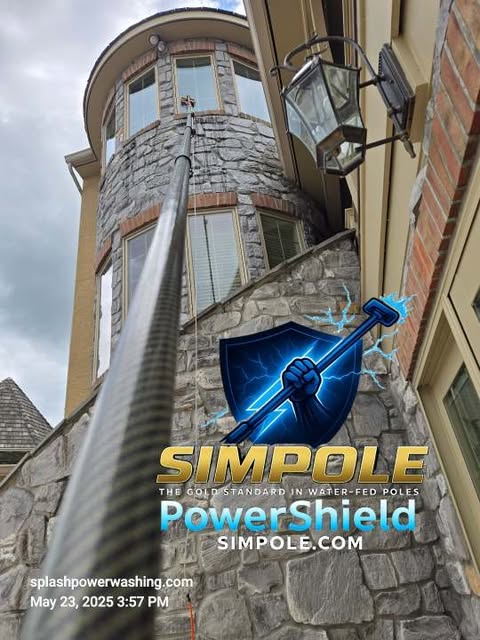
Collections
Share information about your collection with customers. Describe a collection, make announcements related to your collection.
Share information about your collection with customers.
Share information about your collection with customers.
Share information about your collection with customers.
Share information about your collection with customers.
Share information about your collection with customers.

